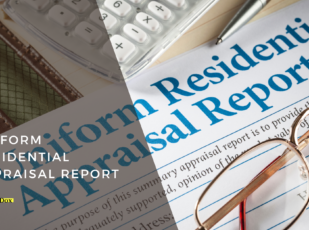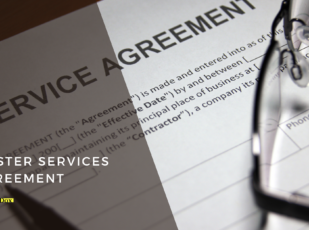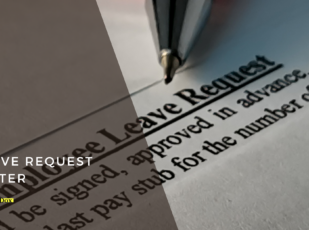
Returns Policy Template
6 Downloads
Commercial, Corporate
December 8, 2024
Sayantani Dutta
It doesn’t matter what type of business you own; sooner or later, you’ll need to process a refund. Brick-and-mortar and online retailers need a solid returns policy in place as part of their customer support strategy.
Service-based and goods-based businesses need return policies, and without them, your business could end up facing backlash from the consumer that sinks your brand reputation with potential customers.
This post takes you through the need for a returns policy and how to structure it to protect your business and keep your customers happy.
What are the Different Types of Refund and Returns Policies?
Here are the types of refunds online and offline retailers usually offer their customers. Some might offer one specific type or a combination of them, depending on the nature of their business.
Full Refund
Offering the customer a full refund takes the transaction back to square one. You take the merchandise back, and the customer gets their money back.
Exchange or Store Credit
The exchange policy says customers can swap the product or item for something similar, or the retailer will offer store credit or gift cards if they can’t make an exchange.
All Sales Final
No refunds, returns, or exchanges are available for these items.
Trial Periods
This tactic is popular with mattress retailers. They’ll offer a 100-night sleep trial to allow you to test the bed. If you don’t like it, you send it back, along with a small restocking fee.
Money Back Guarantee
The customer has the right to return the product and get their money back in a set period. For instance, a retailer might say, buy product X or sign up for service X and get a 3-month money-back guarantee on your purchase.
Why Does Your Business Need a Refund Policy?
Whether you run a brick-and-mortar business or an online store, a refund policy is a non-negotiable part of your operations manual and business practices. It helps you temper customer expectations surrounding your business and how they interact with it.
It helps set customer expectations regarding the following.
- Does your business accept returns, exchange goods or services, offer refunds, or give store credit?
- The items eligible for a return and the condition they need to be in when returning them.
- Fees related to returning an item.
- The time the customer has from the date of sale to return the item or service.
- How many days does it take your team to get around to processing the refund?
Your refund policy is a huge part of building customer satisfaction, retention, and customer loyalty. Without it, you’re setting yourself up for problems with your customers sooner or later.
Successful businesses run on systems and policy manuals.
If you don’t have the terms and conditions of your refund policy clearly outlined in your operations manual, employees will need to deal with returns by looking at the merits of each transaction, and that gets messy.
Since the return policy acts as a binding legal agreement between your business and the customer, you can include provisions for clauses permitting you to pursue or deny legal action against shoppers who make fraudulent returns.
Writing a Returns Policy for Small Businesses: Best Practices
A Returns Policy is a Legal Document
Get legal advice when formulating your returns policy to understand the state laws in place surrounding returns policies with respect to consumer protections.
The last thing you need is to set your business up to catch a case, so double-check that the terms and conditions of your refund policy comply with consumer protection legislation and avoid legal headaches and hassle down the road.
Your Returns Policy Must Use Clear Language
Write the terms and conditions of the policy in clear, concise language so the customer knows their eligibility, how to start the refund process, and what to expect from it. Using complicated legal jargon will have your customer service team fielding questions non-stop from confused shoppers. A clear return policy has headings so the customer can scan the policy to find the exact terms they’re looking for.
Make Your Returns Policy Easy to Find
Don’t bury it out of sight deep in your site map. Add a link to it on the website footer next to your disclaimer. Create an FAQ on how to apply for and process returns with your business. The returns policy should clearly outline the steps the customer needs to start the refund process, such as submitting an email request to your customer service team, calling a specific telephone number, or making a returns request directly through a form on your site or within a shopping app.
Use a Refund Policy Template and Customize It
If you have no idea where to start with fleshing out your returns policy, use a template. FreshDox.com has a fully customizable returns policy template you can tailor to your specific business needs.
Terms and Conditions To Include in a Returns Policy
Whether you run a brick-and-mortar or e-commerce business, there are at least seven key headings you’ll need to include in your returns policy.
Basic Business Information
Customers need to connect your business and your returns policy, so include your company information to make it an official binding agreement. List the basic info like your company name, address, email address, and phone number. You’ll also need to capture the customer’s contact information to process the return.
The Products Approved for Returns and Refunds
What products can customers return? It makes sense that perishable goods don’t qualify for a return, but what other items in your store have limitations on refunds and returns? What are your terms for final sale items or clearance sale items?
Item Return Condition
Most retailers only accept returns if they include the original packaging with tags, they’re undamaged, and in original condition. This section won’t apply to service-based businesses.
Time Frame for Returns
Clearly outline the deadline for making the return. How many business days do they have from the date of purchase to start the refund process?
Proof of Purchase
Online retailers automate this part of the checkout process, and it’s easy to retrace credit card purchases from ecommerce stores. Just ask your customer to give you the details of the original payment method they used and their order number or invoice number, and your customer service team handle the rest. If you run a brick-and-mortar store, insist on the customer providing proof of purchase for the purchased item, or you leave yourself open to fraudsters taking advantage of this loophole.
Refund Reasoning
The customer must explain the reason for returning the product. They may only qualify if the product is defective or if the customer can’t use it as expected.
Return Fees Where Applicable
Most companies offer a free return on smaller items. For larger items, the customer might have to pay a restocking fee. You’ll need to clearly outline the percentage fee (usually 5%) in the terms and conditions of the returns policy, or your customers will throw a fit when they see you charging them return shipping costs.
Details of the Returns Process
Take your customers by the hand and lead them through the step-by-step process of making returns with your business. Does the customer return products in-store or mail them in? Do they have to wait for you to approve their reason for return, and if so, how long?
Download a Returns Policy Template at FreshDox.com
Why go through the hassle of building out a refund policy when you can get a free return policy template at FreshDox.com? Try our platform with a 7-day free trial and access our huge catalog of fully customizable templates for your business, legal, and educational requirements. You get professional templates in Word and PDF formats for easy editing, printing, and electronic distribution. Sign up for a free account right now and start browsing our template library!
Related Templates
Discover more templates that align with your needs and preferences.

Ready to Sign Up?
Sign up for FreshDox.com’s 7-day trial and discover why so many individuals and businesses trust us for their legal document template needs.
- Cancel any time
- 7-day free trial
- From 300+ Customer Reviews
















